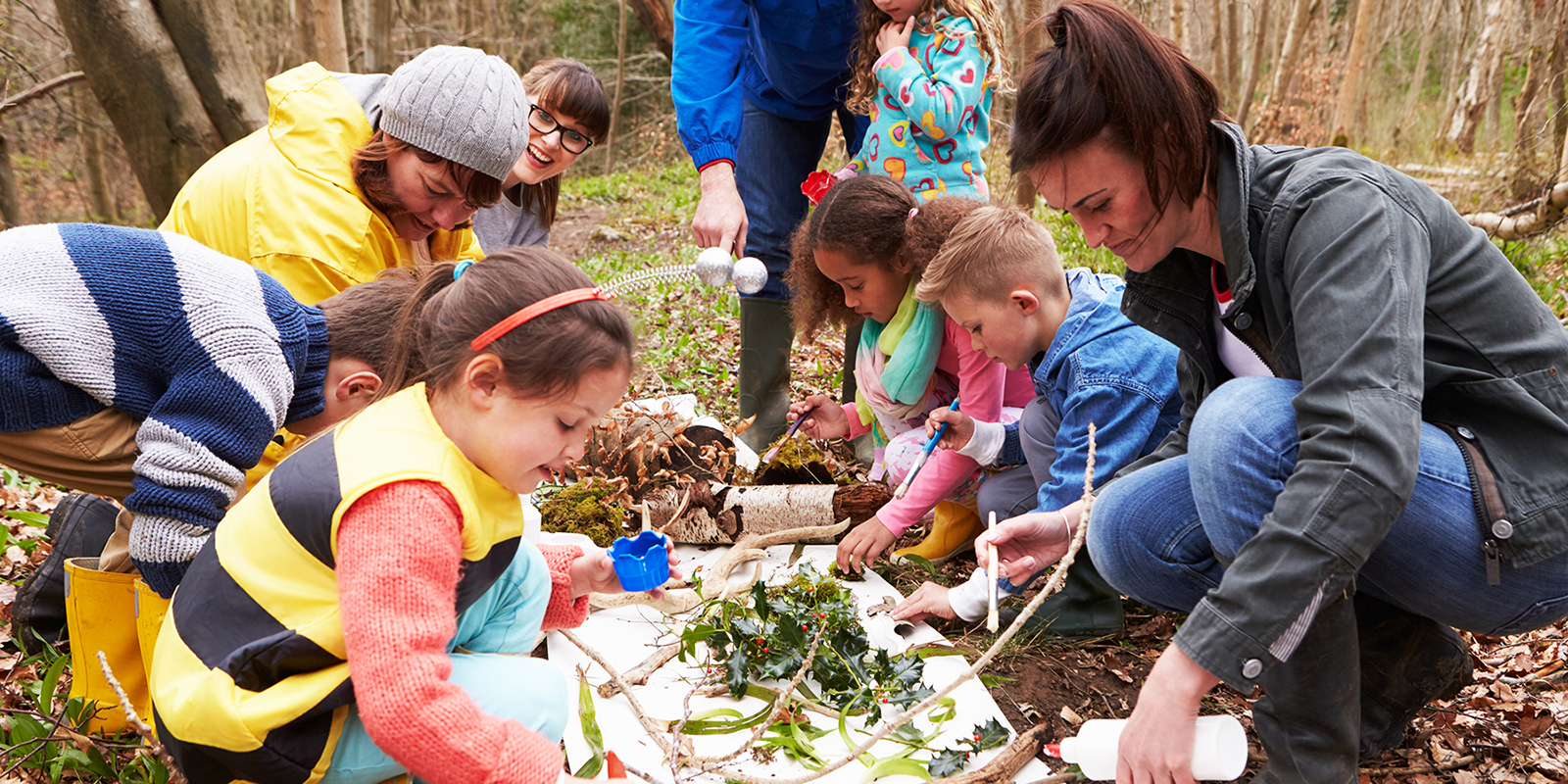
Forest School VS Outdoor Learning
Outdoor learning is becoming increasingly popular among schools. More and more, Forest Schools are cropping up across the UK, and educators are discussing the benefits to children and schools. Importantly, Forest School is not just another word for Outdoor Learning! Let's discuss all things Forest schools and consider the difference...
Forest school is not just another word for outdoor education! While offering the same benefits to children's health and wellbeing as well as their early development and strengthening their capabilities within the wider curriculum, forest schools follow a specific approach.
So... what are the 6 Forest School key principles?
- Forest schools are a long-term process. They involve regular, structured sessions rather than infrequent visits to the outdoors
- Forest school takes place in a natural environment, not just the school playground. The most common setting is a woodland setting or forestry areas. This is to develop a child's relationship with the natural world
- Forest school programmes are user-centred designed to create a community for developing and learning together
- Forest schooling aims to foster confidence, resilience, independence and creativity in its learners
- Designed to offer opportunities for risks (which are supported and supervised by forest school leaders)
- Forest schools are to be run by qualified forest school practitioners who continuously maintain and develop their professional practice

Forest School Practitioners
Forest school practitioners gather information about each of their learners through conducting baseline assessments. This is to enable them to provide opportunities for growth and skill development through direct experiences. This is important because when a child learns something through experience, it tends to stick and remain fresh in their minds! Forest Schools practitioners understand how to use the baseline information of each learner to increase emotional, physical, and social skills and provide healthy challenges.
While all educators are able to take learning outdoors, Forest Schools are lead/supervised by these aforementioned forest school practitioners. To start with, to be a forest school leader, a Level 3 qualification is usually required, a certificate for forest school leaders. You will also need to have outdoor first aid training. For educators wishing to be forest school assistants rather than leaders, there is alternatively a Level 2 qualification.
You can find out more about forest school practitioner qualifications and certificates here.
Risks and Rewards in Forest Schools
Risk management is an important aspect of a child's development. As discussed, one of the six key principles of Forest School is to provide opportunities for risk. But what can risk look like within a forestry school programme?
Fire Safety
Fire safety and cookery is a great way to teach children and young people about hazards and risks. They might not otherwise have opportunities to learn about the dangers of fire and how to work with it safely. Many of the schools we have worked with have opted for our BBQ log cabin in order to develop their forest school programmes and introduce fire safety sessions and safe cooking sessions. Our BBQ cabins are not just ideal additions with the central BBQ grill units but they also provide shelter for schools during rain, snow (or the hot summer months!) Therefore, our BBQ log cabins allow forest schools to function and thrive all year round, no matter the weather outside!

Natural Obstacles
Forest school encourages children to step outside of their comfort zones and test their physical and mental boundaries, as well as the limits or boundaries of their peers and the world around them. There are so many elements of forest schools which pose risk and teach risk management to children. With forest school taking places within natural areas like woodlands, there will be a vast array of things to judge, assess, interact with and watch out for. There will be different sizes of logs and sticks posing questions such as 'can I balance on this?' or 'can I step over this?' There may also be protruding tree roots to be mindful of tripping over, or other natural obstacles, as well as mud and muddy puddles which risk getting dirty, wet or slipping over. All of these aspects are fantastic teachers of assessing risks, demonstrating cause and effect, and helping children to develop problem-solving abilities and independent thinking.
This makes forest school learners more mindful, teaching them to expect changes and assess their surroundings or situations. In turn, it creates opportunities for communication between peers, as well as teacher-pupil communication. Forest school learners can develop empathy through spotting hazards and warning other children about them or informing a forest school practitioner.
We helped to develop Cutnall Green C of E Primary School's Forest School Programme with two 14m² connected cabins. One cabin has a central BBQ grill for forest school fire safety, while the other features a solar pipe to led the natural light flood in! They actually funded their Cabins for Schools forest school log cabin through fundraising, getting the school community and the wider local community to come together in support of their forest school mission. This really shows the strength of community spirit which forest schools can foster.
You can read our full case study to find out what the headteacher had to say about the impact a log cabin has had on the primary school's forest programme.
If your school is setting up a new forest school or have an existing forest school programme you wish to improve with a forest school log cabin, get in touch with one of our experts today!
Check out our case study on The Happy Homestead Eco Nursery's Forest School Cabin
sources:








